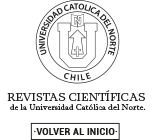Uniform Convergence in B-Duals
DOI:
https://doi.org/10.4067/S0716-09172013000300008Abstract
Let E be a vector valued sequence space with â-dual Åâã. We consider sufficient conditions on E for the series in a pointwise bounded subset of Åâã to be uniformly convergent over certain subsets of E. The conditions involve gliding hump assumptions on the multiplier space E. Applications to matrix mappings between vector valued sequence spaces are given.References
[CL] Aihong Chen and Li Ronglu, A Version of the Orlicz-Pettis Theorem for Quasi-homogeneous Operator Space, J. Math. Anal. Appl., 373, pp. 127-133, (2011).
[Ko] G. Kothe, Topological Vector Spaces II, Springer-Verlag, Berlin, (1979).
[LPY] Lee Peng Yee, Sequence Spaces and the Gliding Hump Property, Southeast Asia Bull. Math., Special Issue, pp. 65-72, (1993).
[LS1] Li Ronglu and C. Swartz, Spaces for which the Uniform Boundedness Principle Holds, Studia Sci. Math. Hung., 27, pp. 379-384, (1992).
[LS2] Li Ronglu and C. Swartz, An Abstract Orlicz-Pettis Theorem and Applications, Proy. J. Math., 27, pp. 155-169, (2008).
[LW] Li Ronglu and J. Wang, Invariants in Abstract Mapping Pairs, J. Australian Math. Soc., 76, pp. 369-381, (2004).
[No] D. Noll, Sequential Completeness and Spaces with the Gliding Hump Property, Manuscripta Math., 66, pp. 237-252, (1990).
[Ro] S. Rolewicz, Metric Linear Spaces, Polish Sci. Publ., Warsaw, (1972).
[St] C. Stuart, Weak Sequential Completeness of â-duals, Rocky Mount. J. Math., 26, pp. 1559-1568, (1996).
[Sw1] C. Swartz, Introduction to Functional Analysis, Marcel Dekker, N. Y., (1992).
[Sw2] C. Swartz, Infinite Matrices and the Gliding Hump, World Sci. Publ., Singapore, (1996).
[Sw3] C. Swartz, Orlicz-Pettis Theorems for Multiplier Convergent Operator Valued Series, Proy. J. Math., 23, pp. 61-72, (2004).
[Sw4] C. Swartz, Multiplier Convergent Series, World Sci. Publ., Singapore, 2009.
[Sw5] C. Swartz, An Abstract Gliding Hump Property, Proy. J. Math., 28, pp. 89-109, (2009).
[Sw6] C. Swartz, Boundedness and Uniform Convergence in â-duals, Proy. J. Math., 29, pp. 75-82, (2010).
[Sw7] C. Swartz, Pointwise Boundedness and Equicontinuity in â-duals, Proy. J. Math., 29, pp. 137-144, (2010).
[Wi] A. Wilansky, Modern Methods in Topological Vector Spaces, McGraw-Hill, N. Y., (1978).
[Ko] G. Kothe, Topological Vector Spaces II, Springer-Verlag, Berlin, (1979).
[LPY] Lee Peng Yee, Sequence Spaces and the Gliding Hump Property, Southeast Asia Bull. Math., Special Issue, pp. 65-72, (1993).
[LS1] Li Ronglu and C. Swartz, Spaces for which the Uniform Boundedness Principle Holds, Studia Sci. Math. Hung., 27, pp. 379-384, (1992).
[LS2] Li Ronglu and C. Swartz, An Abstract Orlicz-Pettis Theorem and Applications, Proy. J. Math., 27, pp. 155-169, (2008).
[LW] Li Ronglu and J. Wang, Invariants in Abstract Mapping Pairs, J. Australian Math. Soc., 76, pp. 369-381, (2004).
[No] D. Noll, Sequential Completeness and Spaces with the Gliding Hump Property, Manuscripta Math., 66, pp. 237-252, (1990).
[Ro] S. Rolewicz, Metric Linear Spaces, Polish Sci. Publ., Warsaw, (1972).
[St] C. Stuart, Weak Sequential Completeness of â-duals, Rocky Mount. J. Math., 26, pp. 1559-1568, (1996).
[Sw1] C. Swartz, Introduction to Functional Analysis, Marcel Dekker, N. Y., (1992).
[Sw2] C. Swartz, Infinite Matrices and the Gliding Hump, World Sci. Publ., Singapore, (1996).
[Sw3] C. Swartz, Orlicz-Pettis Theorems for Multiplier Convergent Operator Valued Series, Proy. J. Math., 23, pp. 61-72, (2004).
[Sw4] C. Swartz, Multiplier Convergent Series, World Sci. Publ., Singapore, 2009.
[Sw5] C. Swartz, An Abstract Gliding Hump Property, Proy. J. Math., 28, pp. 89-109, (2009).
[Sw6] C. Swartz, Boundedness and Uniform Convergence in â-duals, Proy. J. Math., 29, pp. 75-82, (2010).
[Sw7] C. Swartz, Pointwise Boundedness and Equicontinuity in â-duals, Proy. J. Math., 29, pp. 137-144, (2010).
[Wi] A. Wilansky, Modern Methods in Topological Vector Spaces, McGraw-Hill, N. Y., (1978).
How to Cite
[1]
C. Swartz, “Uniform Convergence in B-Duals”, Proyecciones (Antofagasta, On line), vol. 32, no. 3, pp. 289-303, 1.
Issue
Section
Artículos
-
Attribution — You must give appropriate credit, provide a link to the license, and indicate if changes were made. You may do so in any reasonable manner, but not in any way that suggests the licensor endorses you or your use.
- No additional restrictions — You may not apply legal terms or technological measures that legally restrict others from doing anything the license permits.











